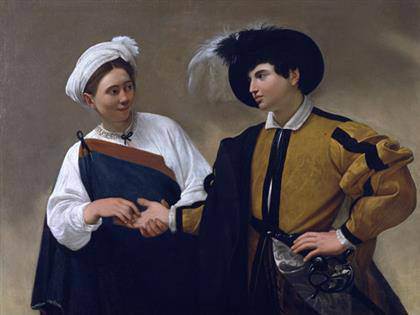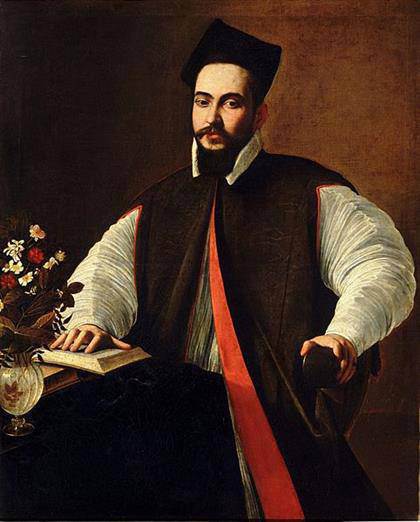
Michelangelo Merisi, called Caravaggio (1571-1610)
Fortune Teller (about 1594–95)

Attributed to Michelangelo Merisi, called Caravaggio (1571-1610)
Maffeo Barberini
Caravaggio and Connoisseurship at MFA Boston ‘Visiting Masterpieces: Caravaggio and Connoisseurship’: The Museum of Fine Arts, Boston (MFA), presents a rare opportunity to view four intriguing paintings by, or attributed to, Caravaggio (1571-1610). April 12 – June 15, 2014.]]>
Source: Museum of Fine Arts, Boston (MFA)
The exhibition introduces visitors to the art of judging whether a “Caravaggio” is, in fact, a “Caravaggio.” Four works never before seen in Boston provide an inside look at the complexities of connoisseurship and attribution. Caravaggio’s “Fortune Teller” (about 1594–95) and “Fra Antonio Martelli, Knight Grand Cross of the Order of Malta” (about 1608), once doubted by experts, are now considered benchmark works by this artist. Two more paintings—”Maffeo Barberini” (about 1596) and “Saint Francis in Meditation” (about 1595)—are at the center of ongoing debates. Organized by the Muscarelle Museum of Art, the exhibition in the MFA’s Lee Gallery allows visitors to employ the analytical thinking of experts and decide for themselves: which could be true Caravaggios? Visitors are encouraged to tweet their opinions using the hashtag #TrueCaravaggio and follow @mfaboston for conversation about the paintings.
This small exhibition originally featured the “Fortune Teller” and two nearly identical paintings of “Saint Francis in Meditation”—one from Rome’s Church of Santa Maria della Concezione and the other from the Church of San Pietro in Carpineto Romano (which was on view at the Muscarelle Museum of Art from February 8–April 6, 2014). With support from the Italian Ministry of Culture, the MetaMorfosi associazione Culturale and Muscarelle Chief Curator John Spike, the presentation has been expanded and now features the version from Carpineto Romano along with the two additional portraits.
“The Fortune Teller” is an undisputed work by Caravaggio’s hand, and provides a prime example of his technique. On loan from Rome’s Capitoline Museums, the painting depicts a well-dressed young fop who is about to have his ring stolen by a gypsy. “Fra Antonio Martelli, Knight Grand Cross of the Order of Malta”, on loan from the Galleria Palatina, Palazzo Pitti in Florence, is a work made near the end of the painter’s life, when he was exiled in Malta. Today this painting is seen as an autograph Caravaggio, but that consensus came after decades of study and examination by scholars. “Maffeo Barberini”, from the Corsini Collection in Florence, was recently reattributed to Caravaggio, and has never before been shown in the US. Caravaggio’s name and fame had been largely forgotten by 1908, when the “Saint Francis in Meditation” in the Capuchin convent of Santa Maria della Concezione on the Via Veneto in Rome was first attributed to Caravaggio and soon accepted by most experts. In 1968, another version came to light in a Franciscan church in Carpineto Romano, a small town outside of Rome. Despite years of discussion, the attributions of these paintings are still in dispute.
Related content
Wadsworth Atheneum shows five works by Caravaggio (exhibition, 2013)
Follow us on:


